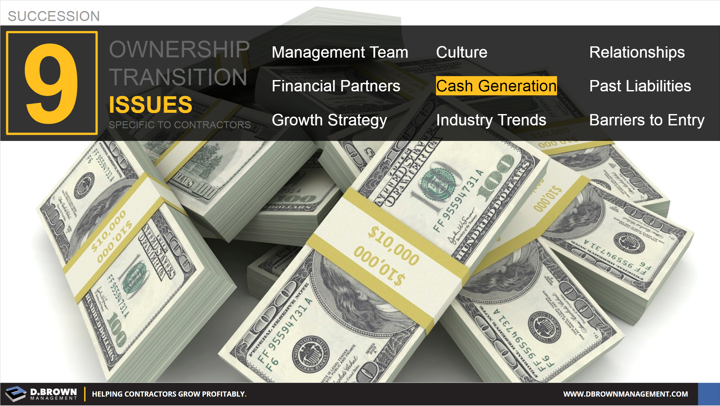- Building construction projects -- just by themselves -- is very cash intensive.
- For that reason, a contractor must have enough working capital along with financing provided by their operating Line-of-Credit (LOC). Depending on the type of contracting business (GC, Specialty, Civil) and work types, this might range between 5-15% of the revenue.
- Growth requires building additional working capital to run the business safely. Your financial partners will ensure that you work within those constraints.
- Working capital is only built through earning profits and retaining them after taxes are paid.
For a simple example: If a contractor requires 10% of their revenue in working capital and is projecting $50M in revenue the following year, they will will need $5M in working capital.
If they earn a 5% pre-tax net profit and pay 40% in taxes, they will retain $1.5M in earnings.
If they plan to grow by 15% the following year to $57M, they will need another $700K (10%) in working capital.
That means they will have $800K in free cash flow to pay for the business or provide a return on capital invested by the new ownership group.

